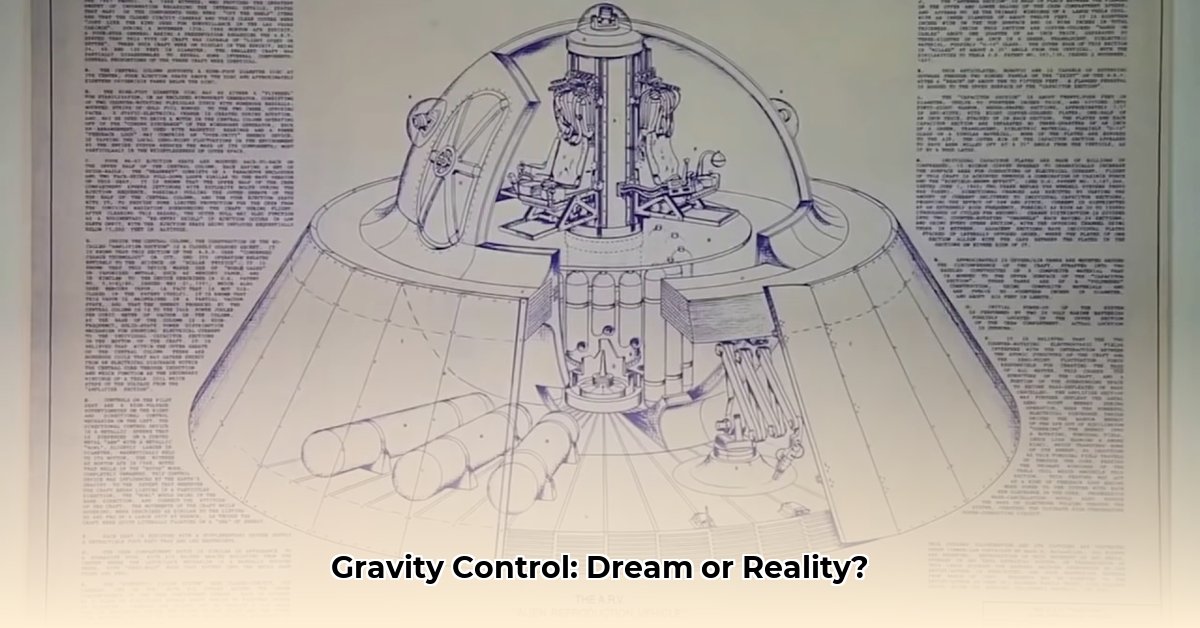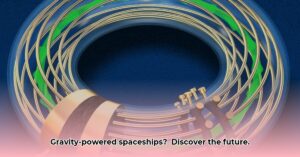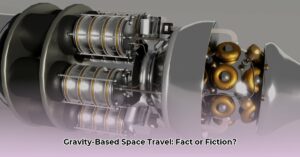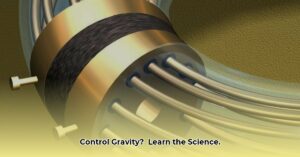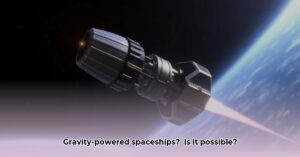The dream of effortlessly navigating the cosmos, unburdened by the constraints of conventional rockets, has long captivated scientists and science fiction enthusiasts alike. This dream hinges on the concept of gravitic propulsion—the ability to manipulate gravity for controlled movement. But is such a revolutionary technology truly within our grasp, or does it remain firmly in the realm of fantasy? This in-depth exploration delves into the science behind gravitic propulsion, examining the various theories, ongoing research, and the significant challenges that lie ahead.
Understanding the Quest for Gravity Control
The pursuit of gravitic propulsion represents a fundamental shift in our approach to space travel. Instead of combating gravity’s pull with brute force, as we do with chemical rockets, the goal is to harness and control this fundamental force to our advantage. Imagine spacecraft gliding effortlessly through the solar system, or even venturing to distant stars, all without the need for massive fuel tanks and complex combustion engines. Such a technology would revolutionize space exploration, opening up a universe of possibilities. But how close are we to realizing this ambitious vision?
Delving into the Science of Gravitic Propulsion
Several theoretical approaches have been proposed over the years, each with its own set of intriguing possibilities and daunting challenges.
The Biefeld-Brown Effect: A Curious Phenomenon
Discovered in the early 20th century, the Biefeld-Brown effect describes the observed thrust produced by a high-voltage, asymmetric capacitor. When a strong electric field is applied, the capacitor appears to move slightly, typically towards its positive pole. While this initially sparked excitement as a potential form of electrogravitics—the interaction of electricity and gravity—the prevailing scientific consensus suggests a more conventional explanation: ion wind. This phenomenon occurs when ionized air molecules collide with neutral air particles, creating a small net force. While likely not a direct manipulation of gravity, the Biefeld-Brown effect nonetheless played a crucial role in inspiring further research into the potential connections between electromagnetism and gravity.
Mach-Effect Thrusters: Riding the Waves of Inertia
A more contemporary approach to gravitic propulsion involves the concept of Mach’s principle, which posits a connection between an object’s inertia and the distribution of all matter in the universe. Physicist James Woodward has been at the forefront of this research, developing the Mach-Effect thruster. This device utilizes piezoelectric crystals, which change shape when subjected to an electric field, to create rapid fluctuations in an object’s internal energy. According to Woodward’s hypothesis, these fluctuations may induce transient changes in mass, potentially producing thrust. While still in its experimental stages, this research represents a novel and potentially groundbreaking approach to gravity control, though definitive proof remains elusive.
Electrogravitics: A Tantalizing Possibility
The idea of directly manipulating gravity with electric fields, known as electrogravitics, continues to intrigue researchers. Could incredibly strong electric fields generate or influence gravitational fields? While the concept remains largely theoretical, with limited experimental evidence, the potential implications are enormous. If we could create and control gravitational fields at will, it would open up entirely new avenues for propulsion, potentially allowing spacecraft to “push” or “pull” themselves through spacetime. However, much more research is needed to determine if electrogravitics is a viable path to gravity control.
Confronting the Challenges and Exploring the Future
The path to gravitic propulsion is fraught with challenges. The energy requirements for manipulating gravity are likely immense, far beyond our current technological capabilities. Furthermore, the underlying physics remains incompletely understood, with many open questions about the nature of gravity and its relationship to other fundamental forces.
Despite these hurdles, the potential rewards are too significant to ignore. The ongoing quest to understand and control gravity continues to drive innovation in propulsion technology and expand our understanding of fundamental physics. As we delve deeper into the mysteries of the universe, perhaps one day the dream of gravitic propulsion will become a reality, transforming space travel and opening up new frontiers of exploration.
Key Players and Institutions in Gravitic Propulsion Research
The pursuit of gravity control has a rich history, marked by both intriguing discoveries and unproven claims. Let’s explore some of the key players and institutions that have shaped this field:
- T. Townsend Brown: Brown’s early work on the Biefeld-Brown effect sparked interest in the potential link between electricity and gravity. While the effect is now largely attributed to ion wind, Brown’s research and patents laid some of the groundwork for later investigations.
- Gravity Research Foundation: This organization played a vital role in funding and promoting research on gravity control in the mid-20th century. While their efforts didn’t yield definitive breakthroughs, they fostered a period of intense scientific curiosity and exploration.
- Government Agencies: Organizations like the Aerospace Research Laboratories (ARL) and the Research Institute for Advanced Studies (RIAS) also invested in gravity research, though much of their work remains shrouded in secrecy. This includes the contributions of researchers like George S. Trimble and Louis Witten, whose work continues to pique the interest of those fascinated by the possibilities of gravity control.
- James Woodward: A contemporary physicist, Woodward’s ongoing research on Mach-Effect thrusters offers a promising, albeit still theoretical, approach to gravity manipulation. His experiments with piezoelectric crystals and transient mass fluctuations remain an area of active investigation.
It’s important to note that while these individuals and institutions have contributed significantly to the field, true “gravity control” propulsion remains largely speculative. Current advanced propulsion research tends to focus on more conventional technologies, such as ion propulsion and fusion power, which are distinct from the direct manipulation of gravity envisioned by early pioneers.
The Potential Implications of Gravitic Propulsion
The potential implications of gravitic propulsion are nothing short of transformative. If we could truly master gravity, it would revolutionize space travel, opening up the solar system and beyond in ways previously unimaginable. Interstellar travel, currently a daunting prospect due to the vast distances and limitations of conventional propulsion, could become a reality. Imagine reaching distant stars and exploring new worlds within a human lifetime!
Beyond space travel, gravity control could have profound impacts on terrestrial transportation, construction, and even energy production. Imagine levitating vehicles, buildings that defy gravity’s pull, and new forms of energy generation based on manipulating spacetime.
However, alongside these exciting possibilities come important ethical considerations. The potential for misuse of such a powerful technology, particularly in military applications, necessitates careful thought and responsible development.
While gravitic propulsion remains a distant prospect, the ongoing research and theoretical exploration in this field are pushing the boundaries of our understanding of the universe. The pursuit of this seemingly impossible dream continues to inspire scientists and fuel our collective imagination, driving us to explore the unknown and unlock the secrets of gravity.

